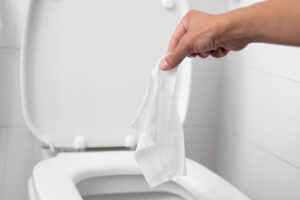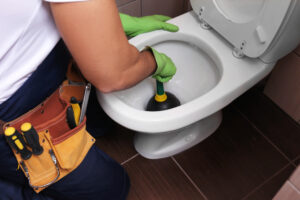Let’s be real here: we’ve all been there. We’ve all experienced plumbing issues at some point or another, whether it’s a clogged bathtub or an overflowing toilet. In many cases, we’ve either had to unclog a drain ourselves or clean up a gross mess as a result of overflow. In worse case scenarios, major clogging issues require professional repair from a licensed plumber.
One of the most widely used appliances in many facilities are toilets, and for the most part, they’re designed to be pretty durable. Toilets don’t require too much maintenance and any minor inconveniences can be easily fixed. When it comes to overflowing toilets, on the other hand, there can be more than one issue at play here. Identifying the root cause may actually require professional inspection from a plumber to not only fix the issue, but ensure it doesn’t happen again. Exactly how many different things can cause a toilet to overflow? Let us count the ways!
The Toilet’s Drain Is Blocked Or Clogged

The Toilet Has A Blocked Vent Pipe
Another common cause of overflowing toilets is a blocked vent pipe. What this means is that the vent pipe responsible for moving external air into the toilet’s plumbing system with every flush has been blocked. This prevents the user from being able to flush the toilet properly, resulting in the toilet bowl overflowing. Unlike with a clogged toilet drain, however, overflow from a blocked vent pipe isn’t a one-time occurrence and can’t be fixed with a few swift pumps from a toilet plunger or elbow grease. Instead, the toilet will overflow with more frequency and will require repair from an experienced plumber.
The Toilet’s Filler Float Is Too High
A third common cause of overflowing toilets is the filler float being set too high. In contrast with a clogged drain or a blocked vent pipe which causes water to overflow from the toilet bowl, having a high filler float will cause water to overflow from the toilet’s tank. This is because the high filler float causes the tank to overfill with water, leading to the inevitable spillover. This is easily fixed by readjusting the filler float and valve so that it controls the water fill level correctly.
Steps To Quickly Stop An Overflowing Toilet

The toilet valve on most toilets is the silver football-shaped knob next to the toilet at the bottom, which provides and controls the toilet’s water supply. Turning this knob counterclockwise will prevent more water from flowing in and preventing the problem from getting worse. If that doesn’t work (either because the valve is stuck or something else is blocking it), another quick fix to a flowing toilet is to hold down the rubber disk inside the toilet’s tank known as the flapper. This is done by lifting the lid from the toilet tank and checking to see if the flapper is open, even just a tiny bit. If it is, simply push the flapper down with your hand until the water stops flowing.
A third way to stop an overflowing toilet is to lift the filler float in order to “inform” the toilet the tank is full. To keep the filler float in place until a licensed plumber arrives to inspect the toilet and make any necessary repairs, use any safe item that can temporarily prop it in place. This will also free your hands to do any necessary cleaning before the plumber arrives.
